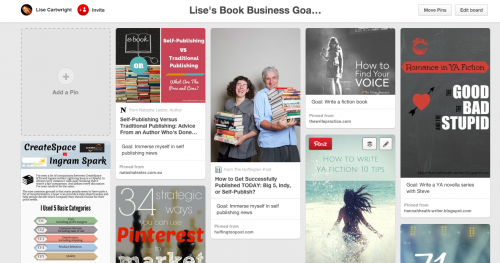As 2015 draws to a close, it’s time to seriously think about your author business. Are you just dipping your toes in the water or are you going to jump into the water, balls all in? <– Sorry, Steve’s influence 😉
We’ve just finished planning our own individual stuff for 2016, and have scheduled a time early next week to map out our plan for Author Basics — so where are you at?
Do we need to give you a slap in the face? Come on… you’ve read enough of our stuff to know that if you’re not taking action, no amount of complaining and coaching is going to help ya. You have to take that first step… and here’s how you can do that.
Your Guide to Setting Author Business Goals
Before you start setting goals, it’s important to take a step back and review what 2015 was like for your author business. Ask yourself the following questions:
- What did I do well in my author business, or what worked out?
- What did I suck at or didn’t do so well in my author business?
Take some time to really answer these questions for yourself, because it’s difficult to plan out your 2016 without first knowing how you’ve done and what changes you need to make going forward.
So go ahead, grab a pen, paper or your computer and write down your own answers… we’ll wait.

Ok, now that you’ve got those question’s answered, the rest of this process is going to be a lot easier.
To set your goals for 2016, it helps if you do this by assigning them to categories. Some suggested categories that you might like to set goals against could be:
- Publishing
- Book Performance
- Marketing/Promotion
- Readers/Fans
- Networking
Here’s How it Works:
Starting with publishing, write down some goals that would fit under this category. Here’s some ideas to get you started:
- Write and publishing 10 books in 2016
- Write a series of books about xxx
- Finish my fiction series on xxx
You get the idea. Repeat the same for the other categories.
Need another example? Ok, you twisted my arm! Let’s focus on the marketing/promotion category next.
- Pre-book promotions for 2016 (create a calendar of my book promotions for the year!)
- Create launch plans for each book I plan to publish in 2016
- Promote my book across my social media accounts every day
These goals should be overarching goals. Don’t worry about all the little tasks that go into achieving the goals, that’s what you’ll focus on next.
This can take some time to nut out. I typically spend about 1-2 weeks writing out these goals. I’ll sit down and write down some initial goals then think about it for a few days then come back to the goals and add to them or change them.
The point of this exercise is to get you thinking about your author business both consciously and unconsciously, so that you can jot down those nuggets that come to you in the middle of the night… just me?!
Ok, now that you’ve got all these goals, how the heck are you gonna make them happen? This part of the process will be different for each person, as it really depends on how your mind ticks. For me, I use a combination of vision boards and a couple of apps to keep me accountable. So if you think the process below won’t work for you, I’d suggest you try it first and then adjust accordingly…
Using Vision Boards + Todoist to Make Goals Happen
Personally, I’m a visual person. I learn by doing, which is kinda weird given that I’m a writer! But hey, I also love to read, but for pleasure more so than learning…
Once I have my goals all written down, I’ll then create my vision board based on those goals. This year I decided to do something a little different and create a vision board on Pinterest. In the past I’ve used a cork board to do this, which I also have, but I’m finding that the Pinterest one is easier to access when travelling 🙂
Now, my vision board is private, so I can’t share the link with you, but here’s a screenshot of what some of it looks like:

The key to making the vision board work for you is to make sure that you update the descriptions of each pin to reflect a goal (as you’ll see in the image above).
By doing this, you’ll keep your goals in the front of your mind, rather than just looking at pretty pictures that don’t immediately resonate.
Try it for yourself.
The next thing I do is take each category and create a label in Todoist for it. I’m a huge fan of Todoist, I use it on my iPad and my Mac and with the pro version (about $36 per year) I can share my projects with others.
I then create a project called “Lise’s Book Business” and add all my overarching goals to this project and then assign each one a label (the category) that I’ve already set up.
From there, I’ll create mini tasks that need to happen for that goal to be achieved.
I’ll add those mini tasks to my Google calendar as a deadline, so that I can keep track of those tasks.
I connect Todoist and my Google calendar with an app called Sunrise, that I access on my Mac.
Is your head spinning? I thought it might, so here’s a quick video of how that actually looks:
This content is reserved for Author Basics members. If you’re already an Author Basics member, please LOG IN to view this content. If not, sign up for the free membership here!
Now, all that’s left to do is for you to actually implement what you’ve just learned in this blog post! 2016 is less than 48 hours away. If you want to be successful in 2016, you cannot leave it up to chance and the powers-that-be at Amazon. YOU are responsible for your success, so go out there and make it happen!


